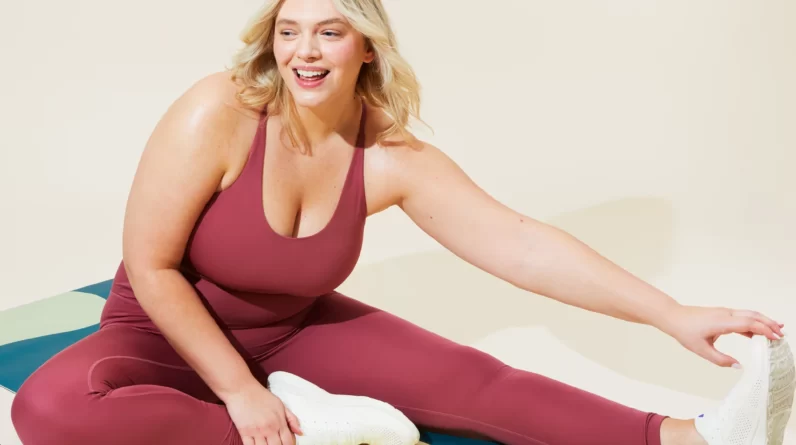
Muscle torment is one of the world’s most widely recognized health problems, and it can be challenging to determine what’s causing it. This article will explore the causes of muscle pain and offer some stretches and exercises. We hope that by providing you with this information, you can get relief from your muscle pain and keep your body healthy. Muscle read on to dive more deeply into the causes of pain, one of the most well-known muscle pains, how to identify it, and how to treat it.
What Causes Muscle Pain?
Muscle pain is a common complaint and can be caused by various factors. Here are three of the most common:
The three main causes of muscle pain are overtraining, skeletal muscle strain, and connective tissue injury. Overuse- excessive exercise- can cause your muscles to swell and become tender. This is because your body’s response to overuse increases blood flow to the muscles to preserve them. Surgical procedures such as childbirth or major surgery can also lead to overuse injuries because they involve large amounts of stress on the body. A skeletal muscle strain occurs when you exercise exceeding your strength or endurance limits. This can be due to incorrect form (for example, poor technique when lifting weights), inadequate warm-up or cooldown periods before the workout, or insufficient rest between sets. Connective tissue injury occurs when the fibers that makeup ligaments and tendons become excessively stretched beyond their normal range of motion. The most common type of connective tissue injury is a sports hernia when the groin area becomes pulled upwards during contraction (as in bench press) or lower-body exercises (as in squats).
Stretches to relieve muscle pain
There are many causes of muscle pain but stretching can effectively relieve pain, Pain and improve flexibility. A few primary stretches can be used to treat muscle pain, which is listed below.
The following stretches should be done cautiously, as they can cause discomfort if performed incorrectly. If the time feels too tight or painful, stop and modify the space until it is comfortable.
1) The Cat-Cow Stretch: This stretch is best done seated with feet flat on the floor and knees bent to 90 degrees. Lean back against a wall or chair with hands behind your head. Inhale as you lift your torso towards the sky, then exhale and gently push your hips forward until you feel a delicate stretch toward the front of your thighs. Hold for 30 seconds before getting back to the beginning position.
2) The Pigeonhole Stretch: Sit on the floor with knees twisted, feet hip-width separated, and arms extended straight out in front of you. Place your hands behind your back, then lean forward so that your forehead rests against your palms. Hold for 30 seconds before getting back to the beginning position.
Exercises to relieve muscle pain
Occasionally, muscle pain can be due to several reasons, such as overuse, inflammation, or even a physical injury. However, many exercises can help relieve muscle pain and improve function. Here are some stretches and strength activities you can do to ease the discomfort:
Stretches:
1. The cat-cow: Lie on your back with both legs bent at the knee and arms extended above your head. Keep your shoulders off the ground and gaze up at the ceiling. Hold for 10-15 seconds before returning to the starting position.
2. The pigeon: Lie flat on your back with your feet on the ground and arms by your sides. Bring both hands together beside your head, then press them away from each other until you feel a stretch in the chest and shoulders. Hold for 10-15 seconds before returning to the starting position.
3. The happy baby: Sit with legs crossed in front of you so that thighs are parallel to the floor and arms alongside the body with palms down (think the position of Juvenile pose). Place forehead against knees for support and gently push hips up until lower back is off the floor (keep wrists stationary!). Hold for 15-30 seconds before releasing into a seated position.
Muscle pain can come from various sources, including overuse, inadequate stretching, and poor posture.
It tends to be hard to differentiate between muscle pain and another health issue, like a cold. But if you experience persistent or recurring muscle pain, it’s worth investigating the cause. Muscle pain can come from various sources, including overuse, inadequate stretching, and poor posture.
Overuse: The most common cause of muscle pain is overuse. This happens when you exercise too much or strain your muscles without giving them enough time to recover. Overuse can lead to inflammation and pain. Pain by activating nociceptors (special nerve cells that respond to physical damage). If the muscle isn’t given enough time to heal and rebuild after stress, you might end up with chronic muscle pain.
Inadequate stretching: Stretching also plays an essential role in preventing muscle pain. Proper stretching helps improve the range of motion (ROM), which reduces the chance of aggravating existing injuries or creating new ones. Plus, stretching helps lubricate the joints and reduce inflammation.
Poor posture: One common contributor to muscle pain is a poor pose. An unfortunate stance comes down on your joints and can cause stiffness and muscle soreness. It can also lead to TMJ (temporal mandibular joint) problems or cervical problems (neck pain). To prevent muscle pain, maintain good posture throughout the day by keeping your head up, neck elongated, shoulders down away from your ears, and spine straightened out.
Ways to reduce muscle pain:
There are a few ways to reduce muscle pain and increase your adaptability. Extending is a fundamental piece of any wellness schedule. Here are five stretches to help reduce muscle pain:
1. Hamstring Curl: Lie face down on the floor with both legs bent so that the feet are close to the buttocks. Place your hands on the floor beside you and curl your hips toward your chest as far as possible. Hold for 30 seconds.
2. Child’s pose: Sit on the ground with your feet together, knees bent, and palms flat on the floor beside you. Release all tension from your neck, shoulders, back, and abdominal muscles, and lean forward until your forehead rests against the soles of your feet (or use a pillow or rolled-up mat). Stay here for up to 20 minutes.
3. Half splits: Place one foot in front of the other at a 90-degree angle and stretch your leg until it’s straight (without locking your ankle). Hold for 30 seconds, then switch legs.
4. Cat-cow: Lie on your back with both knees twisted and feet level on the ground; pull both heels toward you until you make a “cat” shape with each calf muscle contracted (tight). Reverse motion, pushing heels away from you until they reach their original position; repeat 10 times per leg.
5.”The Warrior Three” exercise series: Lie on the floor with straight legs and feet flat on the ground. Extend your left leg toward the sky and bring your right heel close to your left toe. Hold for 30 seconds, then switch legs.
-Stretching
Muscle pain is a common problem affecting people of all ages. Various factors, including muscle strains, overuse injuries, and tumors, can cause it.
Some stretches are recommended for relieving muscle tension and pain, Pain. Here are five famous margins:
1) The cat-and-cow: Lying flat on your back with both legs bent at the knee equally, lift one leg until it’s resting comfortably against your chest. Hold for 30 seconds before lowering the leg to the floor. Repeat with the other side. This stretch can also be done sitting up with a straight leg in front of you and the other bent behind you.
2) The turtle pose: From standing with feet hip-width apart, slowly slide your left foot toward your right heel until both feet are pressed firmly against each other. Hold for 30 seconds before switching sides. You can also stretch while seated on the ground with both legs bent in front of you.
-Exercises for the specific area of
maintain
Many things, including muscle strains, overuse injuries, and arthritis, can cause muscle pain. Here are some exercises for the specific area of pain…
Stretches for Muscle Pain:
1. Bend one knee towards your chest, keeping the other leg straight. Keep your back firmly against the ground as you curl your lifted leg towards your butt. Hold for 30 seconds, then switch legs.
2. Glute Extension: Falsehood level on your back with both feet on the ground and bent at the knee so that both legs align. Drive them upward into the air until fully extended, then lower them back to the starting position. Hold for 30 seconds, then switch legs.
-Ice therapy
There are many potential causes of muscle pain, but most can be traced back to one or more of the following:
1) muscular imbalance – if you’re out of balance, your muscles will pull in various directions instead of working together as they should. This can cause pain and inflammation.
2) tight or overworked muscles – if you do too much damage to your muscles, they’ll start to hurt. You might also develop tightness and stiffness if you don’t do regular stretches to help loosen them up.
3) incorrect exercise technique – if you’re not using the right muscles during your workouts, you could further aggravate the injury by stressing other surrounding muscles. Remember to warm up and stretch before starting any new exercise routine!
-Rest
Various factors can cause muscle pain, but the most common are overuse and inflammation. When muscles are strained beyond their normal limits, they can produce pain. Strength exercises can help to reduce muscle pain and improve joint mobility.
To ease muscle pain, try these tips:
– Take time for rest. Muscles need time to recover from exercise. If you’re injured or have chronic pain, allow your body more time to heal before starting any new workout routine.
– Stretch frequently. Stretching not only helps to reduce muscle pain but also improves joint flexibility and range of motion.
Ways to increase your flexibility:
There are many ways to increase your flexibility, which can help reduce muscle pain and improve your range of motion.
Stretching is a key part of any exercise routine for reducing muscle pain and improving flexibility. Various stretching techniques can be used, but the most effective one is probably the “modified warrior” Stretch: Start in a seated position with the legs extended out in front of you and feet flat on the floor. Lean back slightly and lean forward until your upper body and thighs are parallel to each other. Hold for 30 seconds to 1 moment before delivering.
Flexibility exercises that are recommended for people who experience significant muscle pain include:
1) Yoga: Asana (poses), also known as postures, are essential to yoga. They improve flexibility, help tone muscles, increase circulation, and reduce stress.
2) Pilates: Pilates is a form of exercise that uses resistance bands, weights, or body weight to target specific muscles and increase flexibility. It helps to improve balance, coordination, strength, and posture.
-Practice yoga or another form of stretching every day
Regular stretching and yoga practice can help relieve muscle pain. Some many different stretches and exercises can be used to stretch other body parts. Here are a few times to try:
Hamstring Stretch: Lie flat on your back, feet flat on the ground, hip-width apart, and legs bent at 90 degrees. Keep your abdominal muscles pulled in and use your hands to press down into the floor for support. Hold this position for 30 seconds.
Calf Raise: Standing tall with feet shoulder-width apart, raise one leg towards the sky as high as possible, keeping your back straight and core engaged. Lower your leg back down slowly and repeat on the other side.
Pigeon poses: Stand with both feet together, shoulders pressed lightly against each other, knees soft and slightly bent. Tilt your pelvis forward so that you’re looking down at the floor between your feet – hold for 10-15 seconds per side before slowly returning to starting position.






